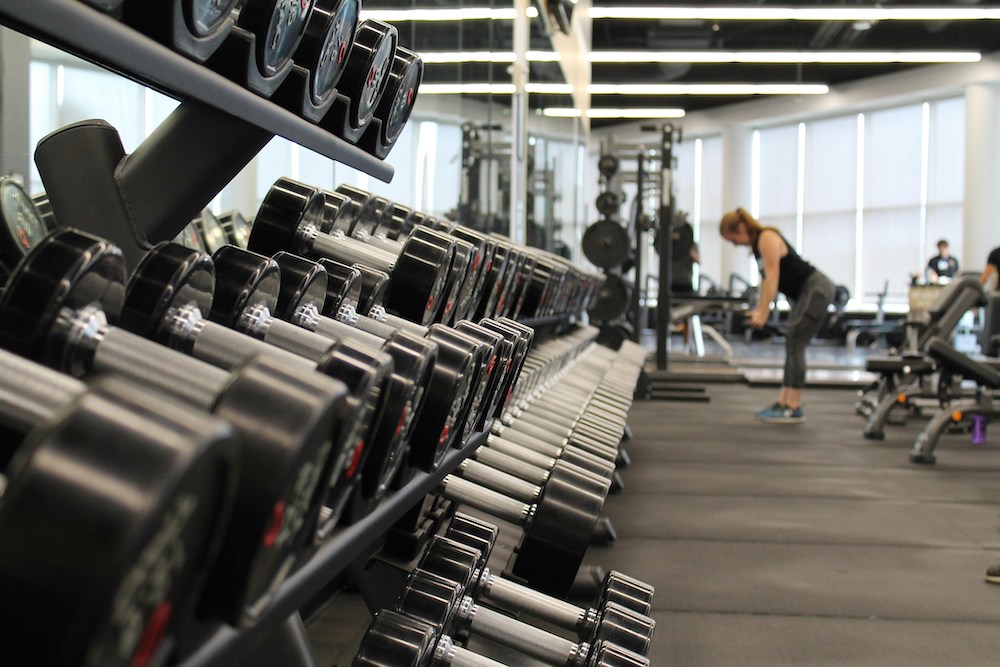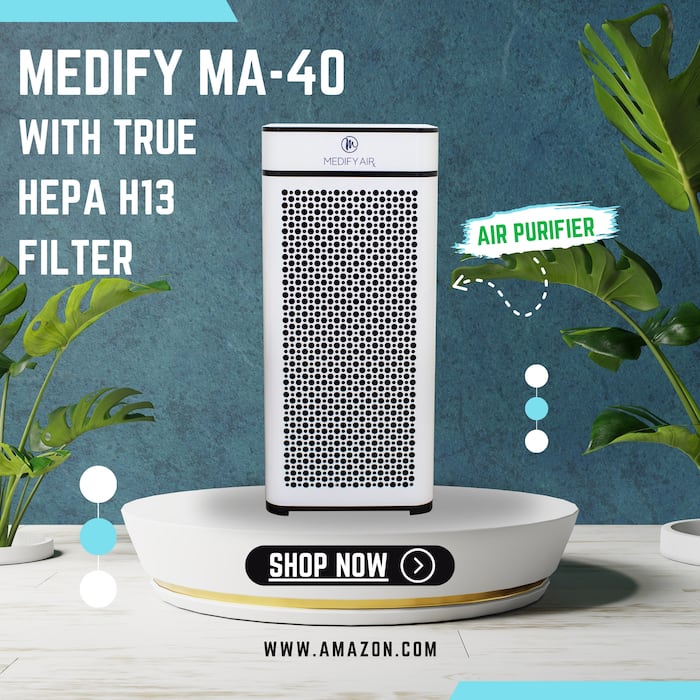Optimizing Indoor Air Quality in Gyms: Essential Tips for a Healthier Workout Environment

The Importance of Good Air Quality in Gym Environments
Maintaining good indoor air quality (IAQ) in gym environments is essential for the health and well-being of both gym-goers and staff. Gyms are unique spaces where people engage in intense physical activities, which increases their respiratory rates and, consequently, the amount of air they inhale. This heightened inhalation makes the quality of the air in these spaces even more critical.
The Health Impacts of Poor Air Quality in Gyms
When air quality is compromised, it can lead to a range of health issues, particularly in a gym setting where people are already pushing their bodies to the limit. Poor IAQ can cause short-term effects such as headaches, dizziness, fatigue, and irritation of the eyes, nose, or throat. In more severe cases, it can exacerbate respiratory conditions like asthma and lead to long-term health problems. Additionally, exposure to pollutants like volatile organic compounds (VOCs), mold, and high levels of carbon dioxide (CO2) can impair cognitive function, reducing the ability to focus and perform effectively during workouts.
Increased Risks Due to High Occupancy and Activity Levels
Gyms often have high occupancy levels, especially during peak hours, which can further degrade air quality. The combination of increased respiration, sweating, and the use of various equipment in a confined space leads to the accumulation of contaminants like dust, bacteria, and VOCs from cleaning products. Without proper air management, these pollutants can accumulate, creating an environment that is not only uncomfortable but potentially harmful.
The Role of Gym Design in Air Quality
The design and layout of a gym can also play a significant role in indoor air quality. Spaces that are poorly ventilated or lack adequate air purification systems are more likely to experience poor air quality. Factors such as the placement of equipment, the materials used in the gym’s construction, and even the types of flooring can all influence the IAQ. For example, rubber flooring, commonly found in gyms, can emit VOCs, contributing to indoor pollution.
Enhancing Air Quality for a Healthier Gym Experience
Understanding the importance of IAQ in gyms is the first step toward creating a healthier workout environment. Gym owners and managers should prioritize air quality by investing in effective air purification systems, regularly maintaining HVAC systems, and choosing low-emission materials and cleaning products. By doing so, they can ensure that their gym provides a safe and healthy environment, allowing members to focus on their fitness goals without compromising their health.
Common Indoor Air Pollutants in Gyms and Their Impact on Health
Gyms are spaces where people push their bodies to the limit, often in confined environments with high occupancy. This makes understanding and managing indoor air pollutants crucial for maintaining a healthy and safe environment for everyone. Poor indoor air quality in gyms can be attributed to a variety of pollutants that are often present due to the activities performed and the materials used within these spaces. Below are some of the most common indoor air pollutants found in gyms and their potential impact on health.
Volatile Organic Compounds (VOCs)
VOCs are chemicals emitted as gases from certain solids or liquids, including cleaning products, disinfectants, paints, and even some gym equipment. These compounds can significantly degrade indoor air quality, leading to short-term health effects such as headaches, dizziness, and eye, nose, or throat irritation. Long-term exposure to high levels of VOCs can result in more severe health problems, including respiratory issues and even liver or kidney damage. In gyms, where cleaning and disinfecting are frequent, the concentration of VOCs can become particularly high, making it essential to choose low-VOC products to minimize exposure.
Carbon Dioxide (CO2)
Carbon dioxide is a naturally occurring gas that is exhaled by people during respiration. In gyms, where people are engaging in vigorous physical activities, CO2 levels can rise quickly, especially in areas with poor ventilation or high occupancy. Elevated CO2 levels can lead to feelings of fatigue, dizziness, and headaches, and can impair cognitive functions, making it difficult to concentrate. In extreme cases, very high levels of CO2 can cause more serious health problems, including respiratory distress. Managing CO2 levels through effective air purification and proper ventilation is essential to maintain a healthy gym environment.
Particulate Matter (PM)
Particulate matter includes a variety of tiny particles and liquid droplets that are suspended in the air. In gyms, sources of particulate matter can include dust, skin flakes, and fibers from clothing or gym equipment. Additionally, activities like vigorous exercise can stir up dust and other particles, increasing the concentration of particulate matter in the air. Breathing in particulate matter can irritate the lungs and exacerbate conditions like asthma and bronchitis. Over time, exposure to high levels of particulate matter can lead to more serious cardiovascular and respiratory diseases.
Molds and Bacteria
Gyms are often humid environments, particularly in areas like locker rooms, showers, and swimming pools. This humidity creates an ideal breeding ground for molds and bacteria, which can easily become airborne and circulate throughout the gym. Exposure to molds spores can trigger allergic reactions, asthma attacks, and other respiratory issues. Bacterial contamination, especially from high-touch surfaces like gym equipment, can lead to infections and other health problems. Regular cleaning, moisture control, and the use of air purifiers with HEPA filters are crucial in reducing the presence of molds and bacteria in the air.
Chemical Residues from Cleaning Products
While cleanliness is critical in gyms, especially in preventing the spread of infections, the residues from some cleaning products can contribute to poor indoor air quality. Harsh chemicals found in some disinfectants and cleaners can linger in the air, potentially causing respiratory irritation and other health issues. Opting for non-toxic, environmentally friendly cleaning products can help reduce the presence of harmful chemical residues in the air.
Effective Strategies for Enhancing Gym Air Quality
Maintaining good indoor air quality (IAQ) in gyms is critical for ensuring a safe and healthy environment for both gym-goers and staff. With the variety of pollutants that can accumulate in these spaces, it’s essential to implement effective strategies that mitigate these risks and promote cleaner air. Below are some proven strategies that can significantly enhance air quality in gyms.
1. Implementing High-Quality Air Purification Systems
One of the most effective ways to improve indoor air quality in gyms is by installing high-quality air purifiers. Air purifiers equipped with HEPA (High-Efficiency Particulate Air) filters can capture up to 99.97% of airborne particles, including dust, pollen, mold spores, and even some bacteria and viruses. For gyms, where there is a high turnover of people and constant movement, these systems are essential for reducing the concentration of particulate matter and other airborne pollutants. Additionally, some air purifiers come with activated carbon filters, which can absorb VOCs and odors, further enhancing the air quality.
2. Regular Maintenance of HVAC Systems
Heating, ventilation, and air conditioning (HVAC) systems play a crucial role in maintaining indoor air quality in gyms. Regular maintenance of these systems, including changing filters, cleaning ducts, and ensuring proper ventilation, is essential to prevent the buildup of dust, mold, and other pollutants. An efficient HVAC system can help to circulate fresh air, control humidity levels, and reduce the presence of airborne contaminants. In high-traffic areas like gyms, it’s important to follow a rigorous maintenance schedule to keep the HVAC system functioning optimally.
3. Managing Humidity Levels
Gyms, particularly those with locker rooms, showers, and pools, can be prone to high humidity levels, which create ideal conditions for mold and bacteria growth. Controlling humidity is key to preventing these issues. Dehumidifiers can be used in areas prone to moisture to keep humidity levels in check. Additionally, ensuring proper ventilation in these areas can help reduce humidity and prevent the buildup of mold and mildew. A humidity level between 30% and 50% is generally recommended to maintain a healthy indoor environment.
4. Choosing Low-Emission Materials and Equipment
The materials and equipment used in gyms can be sources of VOCs and other pollutants. Choosing low-emission materials, such as flooring, paints, and furnishings, can help reduce the release of harmful chemicals into the air. Additionally, when selecting gym equipment, it’s important to consider the materials used in their construction. Opting for equipment that is free from harmful chemicals and emissions can contribute to better indoor air quality. Moreover, using environmentally friendly cleaning products can also minimize the introduction of toxic residues into the gym environment.
5. Encouraging Proper Hygiene Practices
Promoting good hygiene among gym-goers is another important strategy for maintaining air quality. Encouraging members to clean equipment before and after use, use hand sanitizers, and properly dispose of trash can help reduce the spread of bacteria and viruses. Providing easy access to cleaning stations and educating members about the importance of hygiene can create a cleaner, healthier environment for everyone.
6. Monitoring Air Quality Regularly
Regular monitoring of indoor air quality is essential to ensure that the measures in place are effective. Using air quality monitors that track levels of CO2, VOCs, particulate matter, and humidity can provide valuable data on the gym’s air quality. This information can help gym managers identify potential issues early and take corrective action before they become serious problems. Consistent monitoring allows for a proactive approach to maintaining high IAQ standards.
Get a Free Indoor Air Quality Consultation Today
Ensure a Healthier Environment for Your School or Office!
Related Posts:

Classrooms Are Running Out of Time to Improve Indoor Air Quality in 2024
Classrooms Are Running Out of Time to Improve Indoor Air Quality in 2024 In 2024, the urgency to address indoor

Breathing Clean: The Overlooked Component of Food, Fitness, and Supplements
Breathing Clean: The Overlooked Component of Food, Fitness, and Supplements In the pursuit of wellness, many individuals focus on their

HEPA-13/14 A Breakthrough for Asthma Sufferers
Fontaine and HEPA-13/14 Air Purifiers a Breakthrough for Asthma Sufferers Asthma, a chronic respiratory condition affecting millions worldwide, finds a
The Role of Air Purifiers in Maintaining a Healthy Gym Atmosphere
Air purifiers play a crucial role in maintaining a healthy gym atmosphere by effectively removing airborne pollutants that can compromise indoor air quality. In a gym setting, where physical activity increases respiratory rates and the demand for clean air is higher, air purifiers are essential tools for ensuring that the environment remains safe and conducive to health.
How Air Purifiers Work
Air purifiers work by drawing in air from the surrounding environment and passing it through a series of filters designed to capture different types of contaminants. The most effective air purifiers use HEPA (High-Efficiency Particulate Air) filters, which are capable of trapping particles as small as 0.3 microns with an efficiency of 99.97%. This includes dust, pollen, mold spores, and even some bacteria and viruses. Some advanced air purifiers also incorporate activated carbon filters, which are effective in absorbing volatile organic compounds (VOCs) and unpleasant odors, further enhancing the quality of the indoor air.
The Benefits of Using Air Purifiers in Gyms
In a gym, where the air is often filled with sweat, dust, and other particulates, air purifiers can significantly reduce the concentration of these pollutants, providing several key benefits:
Reduction of Allergens and Respiratory Irritants: Air purifiers help remove common allergens such as dust mites, pollen, and pet dander that may be brought in by gym-goers. By reducing these irritants, air purifiers can help prevent respiratory issues and allergic reactions, creating a more comfortable environment for all users.
Control of VOCs and Chemical Odors: Gyms often use cleaning products and disinfectants that emit VOCs, which can linger in the air and contribute to poor indoor air quality. Air purifiers with activated carbon filters can effectively absorb these chemicals, reducing their presence and minimizing their impact on health.
Mitigation of Molds and Bacteria Growth: High humidity levels in gyms, especially in locker rooms and shower areas, can lead to molds and bacteria growth. Air purifiers can help capture molds spores and bacteria, preventing them from circulating in the air and potentially causing respiratory issues or infections.
Enhanced Overall Air Quality: By continuously filtering the air, purifiers help maintain a higher standard of air quality throughout the gym. This is particularly important during peak hours when the gym is crowded, and the air is more likely to become polluted with sweat, dust, and other contaminants.
Selecting the Right Air Purifier for Your Gym
When choosing an air purifier for a gym, it’s important to consider factors such as the size of the space, the types of pollutants present, and the purifier’s filtration capabilities. Larger gyms may require multiple units or purifiers with higher air changes per hour (ACH) to ensure that the entire space is adequately covered. Additionally, purifiers with HEPA filters and activated carbon filters are ideal for addressing the wide range of pollutants commonly found in gym environments.
Integrating Air Purifiers into Your Gym’s Maintenance Plan
To maximize the effectiveness of air purifiers, they should be integrated into the gym’s overall maintenance plan. This includes regular cleaning and replacement of filters, proper placement of units to ensure optimal air circulation, and continuous monitoring of air quality to adjust the purifier settings as needed. By making air purifiers a key component of your gym’s health and safety strategy, you can provide a cleaner, healthier environment for all users.
Got questions? Contact us or get free consultation.
Adherence to Guidelines from:
- World Health Organization
- CDC
- EPA
Expert in the field of IAQ
Our seasoned advisors provide trusted solutions to secure your family's or employees' health.
Each case is handled alone
Personalized approach to address your specific air quality needs effectively and efficiently.
Chat with an expert any time
Access our expert advice whenever you need it, ensuring continuous support for your air quality concerns.
Helped install 1.2 Million air purifiers
Proven track record of enhancing indoor environments with our comprehensive air purification solutions.







